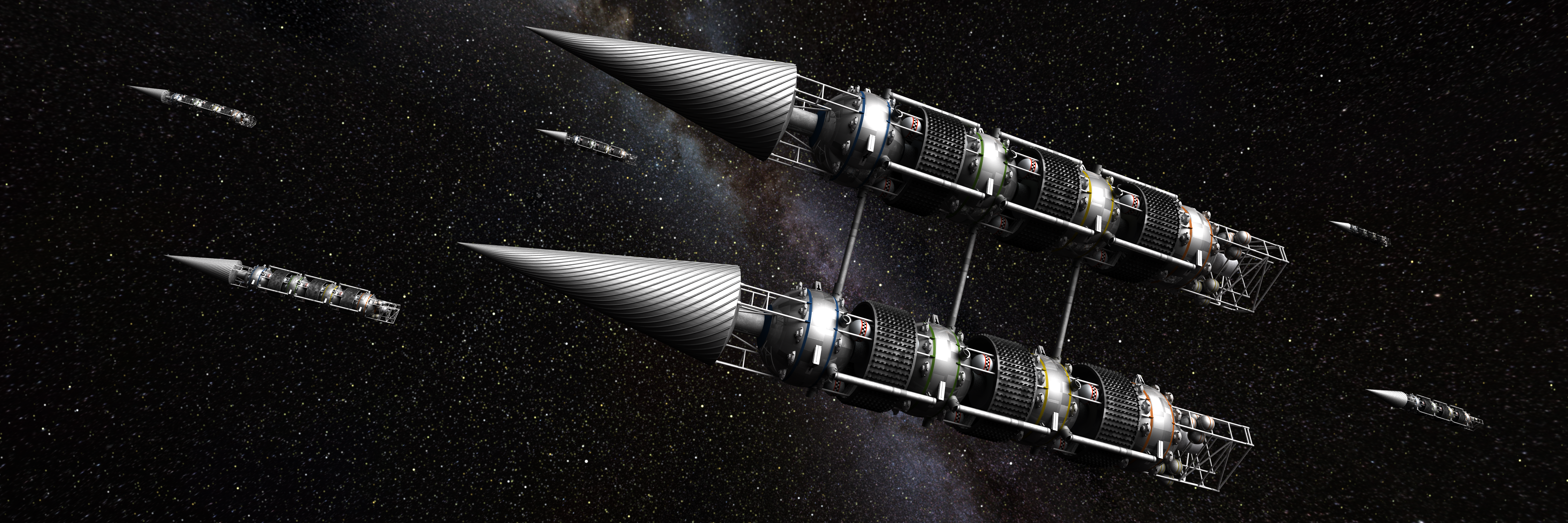Robert Duncan-Enzmann
Drop Your Buckets Where You Are! is a story from history past, from the 1500’s, as Portuguese-design caravels were being displaced by galleons. It tells of a small ship that just emerged from the usually cloudless North Tropical: that ‘ocean desert’ called the Horse Latitudes. So hot and dry is it that horses – creatures that must have water – on their way to the New World were often blindfolded and tossed overboard. The ships couldn’t carry enough water for them.
It’s said, several times, small ships offshore from the mighty freshwater Amazon, appealing to a passing ship for water, were signaled: “Drop your buckets where you are.” Then: “We don’t taunt you. The water is fresh, you’ll be surprised – try it!”
Is there a parallel in the Ocean of Interstellar Space? Is there a way of reducing the perfectly dreadful mass ratio of payload and ship to fuel-&-reaction-mass? The best estimates are, to this day, still 1000 to 1 or more.
A parallel is at least possible. The ocean between stars isn’t empty.
Note: There are many ways of somewhat reducing ship-&-payload ration to fuel-&-reaction-mass. Here we mention that while solar plunging excels as a way of reducing mass needed for acceleration and deceleration, think how wonderfully better our situation would be if our Earth and Sun were in a globular cluster.
Operation of Key Fission Reactors at Relativistic Velocities
Small fission reactors will supply starships’ internal power needs. None have considered reactor structures to operate when the ships cruise (hopefully they will in the nearer, rather than far-off future), or just coast at relativistic velocities.
The problem occurred to me when working on hot pressing beryllium oxide components for America’s ANP (it stands for aircraft nuclear propulsion, an eminently practical system. Aircraft will no longer spew out excess fuel over metropolitan areas. Ever wonder why there are so many more children with asthma around airports? Aircraft fires will no longer cost countless lives, air transportation will be enormously cheaper).
Realizing, Engineering – Interstellar Hydrogen Scoop
My friend and colleague of many years, Bussard, originated the concept of scooping hydrogen from the interstellar continuum with nets of gossamer wires – tens to over a hundred kilometers in diameter – shaped magnetic fields scooping hydrogen into a fusion reactor. There are one or more hydrogen atoms per cubic centimeter of average galactic interstellar space. Moving at about 1/10 light’s velocity, significant proton mass can be collected per unit time.
Expanding on Bussard’s considerations I have studied the possibility of using laser light rather than a material net to do the scooping. A net of light escapes other problems: corrosion by dust, net tangles, breaks, the need for complex control of electric currents to keep the Scoop deployed and properly shaped, the impact of uncharged particles on the net, the difficulty of running large amperage through thin wires, local heating, and rupture of wires cooled to be superconductors.
This concept is used in the Enzmann Starship and Echolance designs.
To find more from the mighty mind of Enzmann, check out our quarterly eMags! Click Here.





